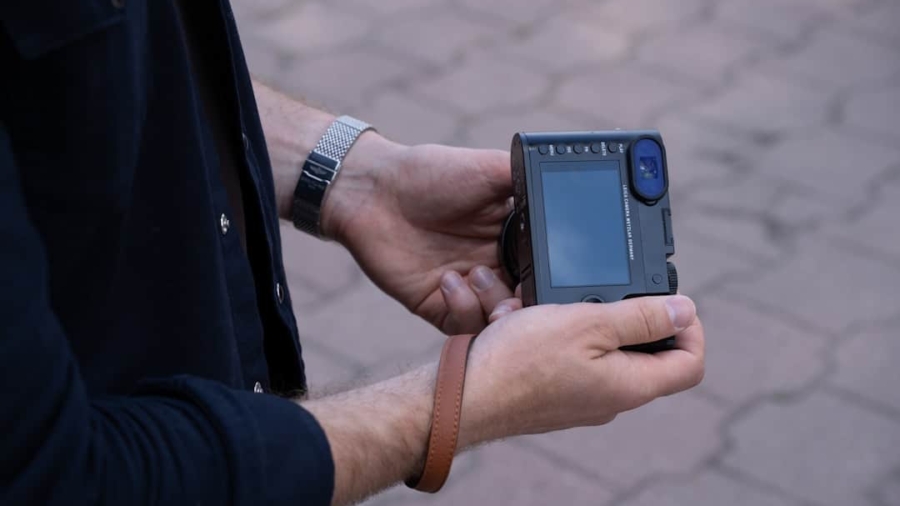In an increasingly globalized world, the ability to communicate across language barriers has become more essential than ever. Wearable translators have emerged as innovative devices designed to facilitate real-time communication between speakers of different languages. These compact gadgets, often resembling headphones or smartwatches, leverage advanced technology to provide seamless translation experiences.
As travel becomes more accessible and international business expands, the demand for effective communication tools has surged, making wearable translators a valuable asset for both tourists and professionals alike. The evolution of wearable translators can be traced back to the advancements in artificial intelligence and natural language processing. Early translation devices were often bulky and limited in functionality, but modern iterations are equipped with sophisticated algorithms that allow for instantaneous translation.
This technology not only enhances the user experience but also broadens the scope of languages supported, making it possible for users to engage in conversations with speakers from diverse linguistic backgrounds. As these devices continue to evolve, they promise to redefine how we interact with the world around us.
Key Takeaways
- Wearable translators are portable devices that can translate speech in real-time, making communication easier for travelers and international business professionals.
- Different wearable translators offer various features such as voice recognition, offline translation, and multi-language support, catering to different user needs and preferences.
- User experience and ease of use are important factors to consider when choosing a wearable translator, as intuitive interfaces and accurate translations can greatly enhance communication.
- Language support and accuracy vary among different wearable translators, with some devices offering support for a wide range of languages and dialects, while others may have limitations.
- Battery life and charging options are crucial considerations for travelers, as longer battery life and versatile charging options can ensure uninterrupted communication on the go.
Features and Capabilities of Different Wearable Translators
Wearable translators come packed with a variety of features that cater to different user needs. One of the most significant capabilities is real-time translation, which allows users to engage in conversations without the lag typically associated with traditional translation apps. For instance, devices like the WT2 Plus offer two-way translation, enabling both parties to speak naturally while the device captures and translates their speech almost instantaneously.
This feature is particularly beneficial in dynamic environments such as business meetings or social gatherings, where fluid communication is crucial. Another notable feature is the integration of voice recognition technology. Many wearable translators utilize advanced microphones that can filter out background noise, ensuring that the device accurately captures spoken language even in crowded settings.
Additionally, some models come equipped with multiple language support, allowing users to switch between languages effortlessly. For example, the Timekettle M2 supports over 40 languages and dialects, making it an ideal choice for travelers venturing into regions with diverse linguistic landscapes. The combination of these features not only enhances usability but also enriches the overall communication experience.
User Experience and Ease of Use
The user experience of wearable translators is a critical factor that influences their adoption among consumers. Most modern devices are designed with simplicity in mind, featuring intuitive interfaces that allow users to navigate settings and select languages with ease. For instance, many wearable translators come with companion mobile applications that provide additional functionalities such as language learning tools and customization options.
This integration enhances the overall user experience by allowing individuals to tailor their devices to their specific needs. Moreover, the physical design of wearable translators plays a significant role in their usability. Many models are lightweight and ergonomically designed, ensuring comfort during extended use.
For example, the Google Pixel Buds offer a sleek design that fits snugly in the ear while providing high-quality audio output for translations. The ease of wearing these devices for long periods makes them particularly appealing for travelers who may need to communicate frequently throughout their journeys. Overall, a focus on user experience ensures that wearable translators are not only functional but also enjoyable to use.
Language Support and Accuracy
One of the most critical aspects of any translation device is its language support and accuracy. The effectiveness of a wearable translator hinges on its ability to accurately interpret and translate spoken language in real time.
This extensive language support allows users to communicate effectively in various regions around the world. Accuracy is equally important; even minor errors in translation can lead to misunderstandings or miscommunications. Many wearable translators utilize machine learning algorithms that continuously improve their translation capabilities based on user interactions.
For instance, the Pocketalk translator employs cloud-based technology to access vast databases of linguistic data, enhancing its accuracy over time. Additionally, some devices offer offline translation capabilities, which can be invaluable in areas with limited internet connectivity. This combination of broad language support and high accuracy makes wearable translators indispensable tools for global communication.
Battery Life and Charging Options
Battery life is a crucial consideration for users who rely on wearable translators during travel or long workdays. Many modern devices are designed to provide extended usage on a single charge, allowing users to engage in conversations without worrying about running out of power. For example, the Timekettle WT2 Plus boasts a battery life of up to 6 hours of continuous use, making it suitable for day-long excursions or business meetings.
Charging options also vary among different models. Some wearable translators come with portable charging cases that not only protect the device but also provide additional battery life on the go. This feature is particularly advantageous for travelers who may not have access to charging outlets during their journeys.
Furthermore, many devices support fast charging technology, enabling users to quickly recharge their translators during short breaks. The combination of robust battery life and versatile charging options ensures that users can rely on their wearable translators whenever they need them.
Design and Comfort for Travel
The design and comfort of wearable translators are paramount for users who intend to use them while traveling. A well-designed device should be lightweight and unobtrusive, allowing users to wear it comfortably for extended periods without discomfort. Many manufacturers prioritize ergonomics in their designs; for instance, the Jabra Elite 75t earbuds are crafted to fit securely in the ear while providing excellent sound quality for translations.
In addition to comfort, portability is another essential aspect of design. Wearable translators should be compact enough to fit easily into pockets or small bags without adding unnecessary bulk. Devices like the Langogo Genesis are designed with travel in mind, featuring a slim profile that makes them easy to carry while still offering robust functionality.
The aesthetic appeal of these devices also plays a role; sleek designs often attract users who appreciate modern technology that complements their style.
Price and Value for Money
When considering wearable translators, price is an important factor that can influence purchasing decisions. The market offers a wide range of options at various price points, catering to different budgets and needs. Entry-level models may provide basic translation capabilities at a lower cost, while high-end devices often come equipped with advanced features such as enhanced language support and superior accuracy.
Value for money is determined not only by the initial purchase price but also by the long-term benefits a device provides. For instance, investing in a more expensive model like the Pocketalk Classic may yield better results due to its extensive language database and superior accuracy compared to cheaper alternatives. Additionally, some devices offer subscription services for ongoing updates and improvements, which can enhance their value over time.
Ultimately, consumers should weigh their specific needs against the features offered by different models to determine which device provides the best value for their investment.
Conclusion and Recommendations
As global communication continues to evolve, wearable translators stand out as essential tools for bridging language gaps. Their advanced features, user-friendly designs, and impressive accuracy make them invaluable assets for travelers and professionals alike. When selecting a wearable translator, individuals should consider factors such as language support, battery life, design comfort, and overall value for money.
For those seeking a reliable device for casual travel or business interactions, options like the Timekettle M2 or Pocketalk Classic offer excellent performance at reasonable prices. Conversely, tech-savvy users may prefer high-end models that provide extensive features and superior accuracy. Regardless of choice, investing in a quality wearable translator can significantly enhance communication experiences across diverse linguistic landscapes.
If you are interested in exploring the best software for small businesses in 2023, you should check out this article from Enicomp. This article provides valuable insights into the top software options that can help streamline operations and boost productivity for small businesses.
FAQs
What are wearable translators?
Wearable translators are portable devices that can translate spoken language in real-time. They are designed to be worn on the body, such as around the neck or on the wrist, for easy access during travel or everyday use.
How do wearable translators work?
Wearable translators use speech recognition and machine translation technology to convert spoken words from one language to another. They typically have built-in microphones and speakers to capture and deliver the translated speech.
What features should I consider when comparing wearable translators?
When comparing wearable translators, consider factors such as language support, translation accuracy, battery life, ease of use, size and weight, offline capabilities, and additional features like currency conversion or cultural tips.
What are the benefits of using a wearable translator for global travel?
Wearable translators can help travelers communicate more effectively in foreign countries where they may not speak the local language. They can also provide a sense of security and confidence when navigating unfamiliar environments.
Are there any limitations to using wearable translators for global travel?
While wearable translators can be helpful, they may not always provide perfect translations and can be limited by regional dialects, background noise, or complex language nuances. Additionally, they may not fully replace the need for human interpreters in certain situations.



